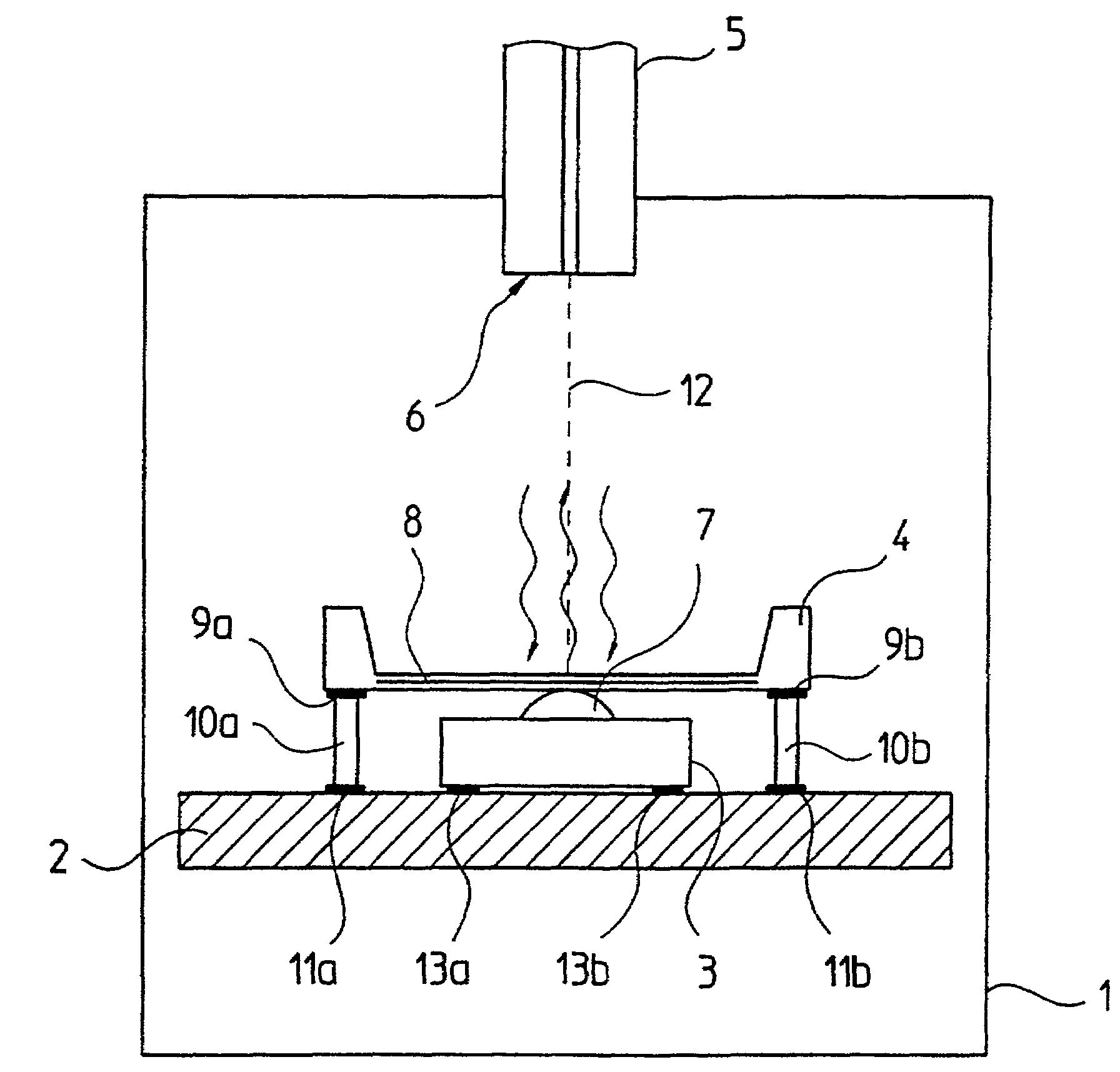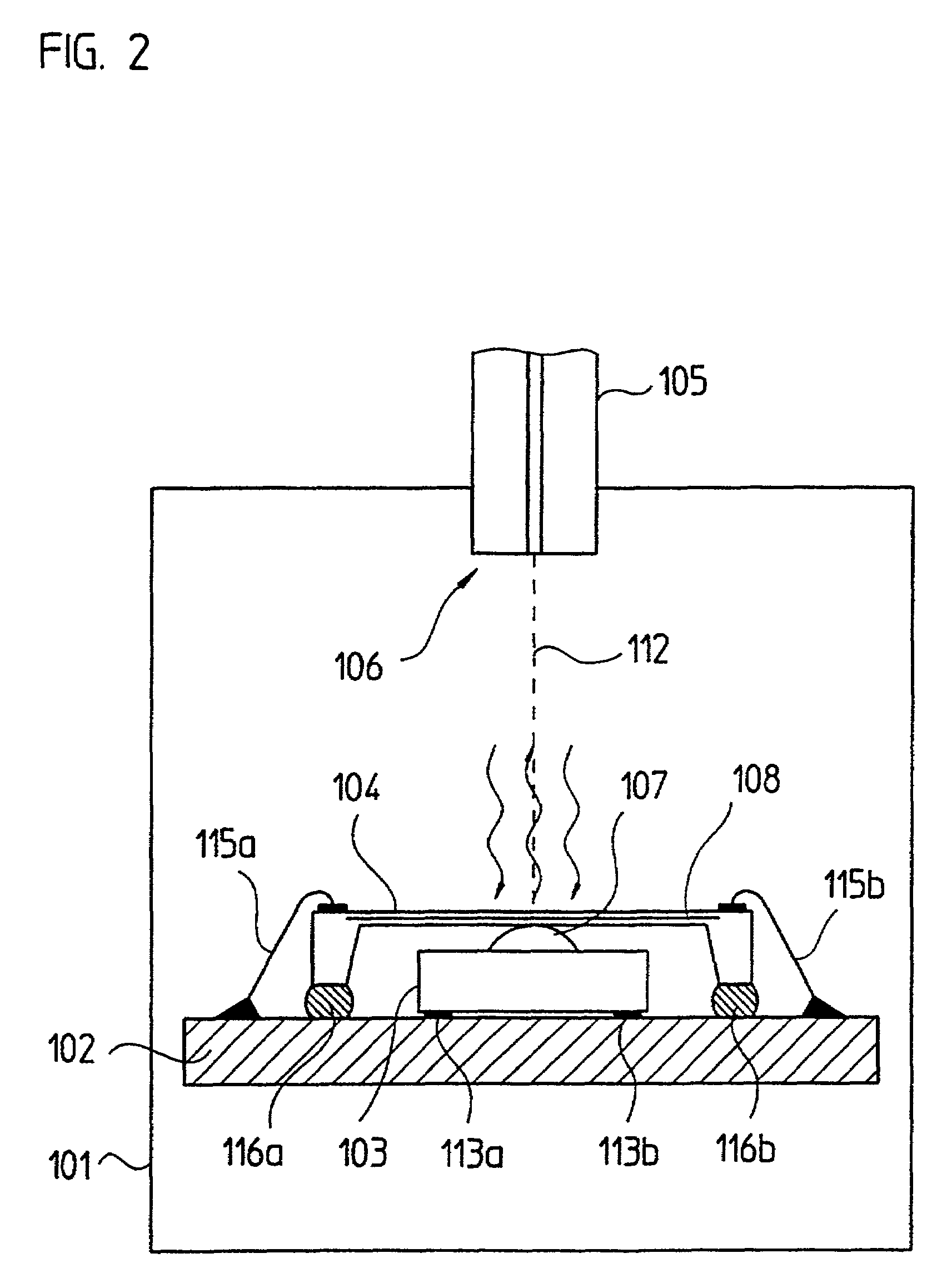Optoelectronic transceiver
- Summary
- Abstract
- Description
- Claims
- Application Information
AI Technical Summary
Benefits of technology
Problems solved by technology
Method used
Image
Examples
first embodiment
[0021]From the schematic illustration in FIG. 1, an optoelectronic transceiver according to the present invention will now be described.
[0022]A substrate element 2, embodied for instance as a printed circuit board, is disposed in a suitable housing 1. The elements of the present invention are disposed on the substrate element 2, and besides performing mechanical supporting and stabilizing functions, the substrate element 2 also serves to contact the optoelectronic components disposed on it. To that end, suitable conductor tracks, not visible in FIG. 1, however, are provided in the substrate element 2. As the essential components relative to the function of the optoelectronic transceiver according to the invention, a transmitting unit 3 and a receiving unit 4 are provided on the substrate element 2; they are oriented at a certain spatial relative orientation to an optical waveguide 5, or to its end face 6 that faces toward the optoelectronic transceiver. In this exemplary embodiment,...
second embodiment
[0040]An alternative second embodiment of the apparatus of the invention is shown schematically in FIG. 2. It is essentially distinguished only in the manner of electrical contacting of the transmitting unit and receiving unit 103, 104 disposed on the substrate element 102 in the housing 101. While once again the contacting of the transmitting unit 103 is effected with the aid of the contacting elements 113a, 113b disposed on the back side, an alternative contacting variant is intended only for the receiving unit 104. Thus the receiving unit 104 is secured to the substrate element 102 via insulating elements 116a, 116b, while the contacting is done via bond wires 115a, 115b, which are disposed in the case of the receiving unit 104 on the side that faces counter to the radiation to be detected, or in other words its front side.
[0041]Otherwise, this embodiment of the apparatus of the invention again corresponds to the preceding variant in terms of the relative disposition of the vario...
third embodiment
[0042]the optoelectronic transceiver according to the invention is schematically shown in FIG. 3. Once again, this exemplary embodiment is distinguished from the preceding variants primarily in the selected manner of contacting the transmitting unit and receiving unit 203, 204, and merely offers certain advantages with regard to the possibly fully automatic SMD assembly.
[0043]Thus a substrate element 203 is now provided in the housing 201, and this element has an opening or recess 220 in a portion of it. Both the transmitting unit 203 and the receiving unit 204 are disposed in the region of this opening. The disposition of the transmitting unit 203 is done on the side of the substrate element 202 that is oriented facing away from the optical waveguide 205. The beam shaping optical element 207, embodied as a lens, is disposed in the region of opening 220.
[0044]The contacting of the transmitting unit 204 is done via contacting elements 2013a, 213b, which are disposed on the front side...
PUM
 Login to View More
Login to View More Abstract
Description
Claims
Application Information
 Login to View More
Login to View More - R&D
- Intellectual Property
- Life Sciences
- Materials
- Tech Scout
- Unparalleled Data Quality
- Higher Quality Content
- 60% Fewer Hallucinations
Browse by: Latest US Patents, China's latest patents, Technical Efficacy Thesaurus, Application Domain, Technology Topic, Popular Technical Reports.
© 2025 PatSnap. All rights reserved.Legal|Privacy policy|Modern Slavery Act Transparency Statement|Sitemap|About US| Contact US: help@patsnap.com



